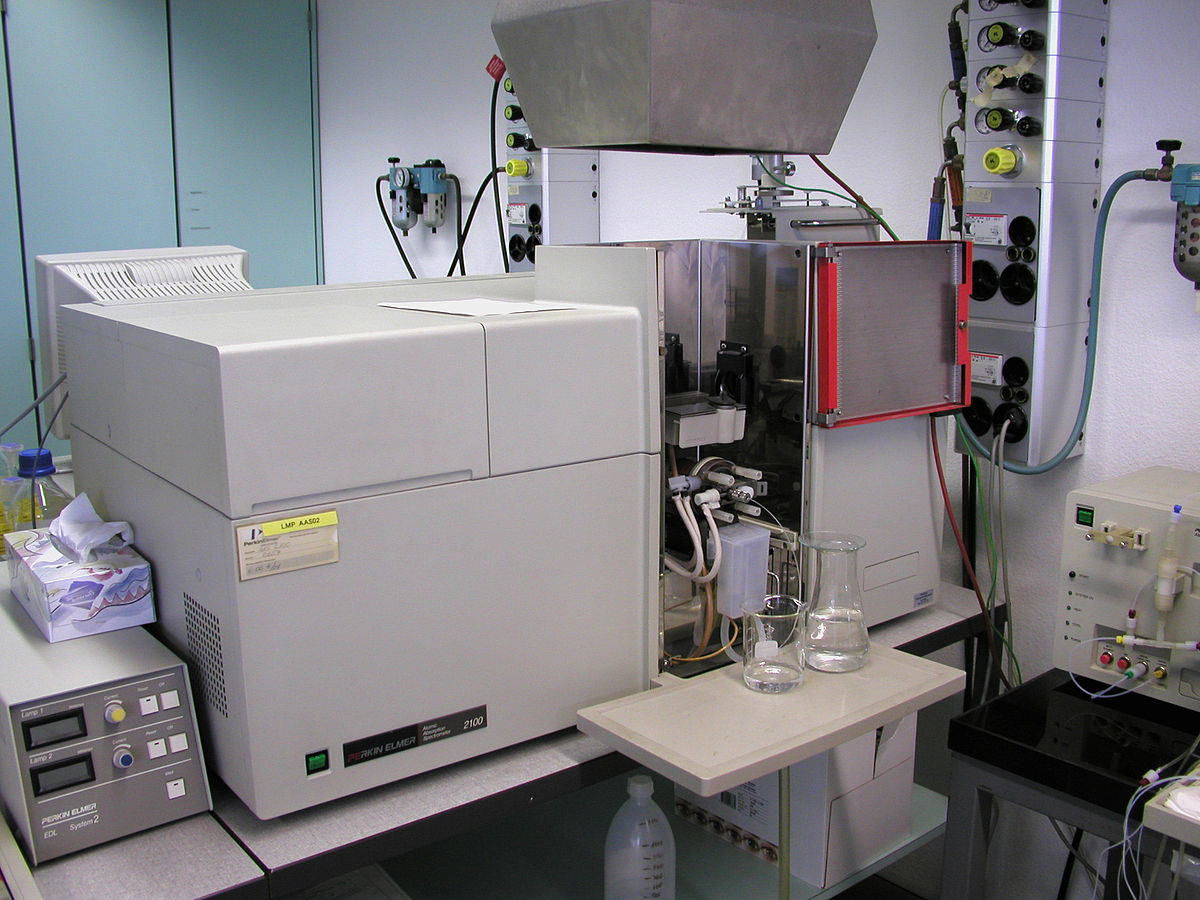Latest News
What is an Atomic Absorption Spectrophotometer?

Atomic Absorption Spectrophotometer
In order to understand the principle and the function of an Atomic Absorption Spectrophotometer, it is imperative here to understand what “Atomic Absorption Spectroscopy” deals with. It is the study that is used to scrutinize the samples of metal. This is carried out by evaluating the existence and concentration of the “Metal” in a liquefied sample. While the “Metals Group” includes Fe, Cu, Al, Pb, Ca, Zn, Cd, and several other metals, when these metals are excited by heat in their elemental form, they absorb the ultraviolet radiations. One metal is made to absorb the gaseous emissions; they respond to it in a unique way that makes it easier to distinguish their characteristics. While they are being treated, every metal will absorb a specific wavelength that will, in turn, help in identifying their characteristics.
How Does an Atomic Absorption Spectrophotometer Works?
While an Atomic Absorption Spectrophotometer is a device that is used to carry out the Atomic Absorption Spectroscopy, the principle by which it works is centered around focusing the ray of ultraviolet (UV) light on to the metal sample. It is practically performed by focusing a specified wavelength over the metal being tested. The ultraviolet beam of light is focused through a “Flame,” directly into the “Detector.” The liquid sample of the metal is “Atomized” into a vaporous state and is then enunciated into the flame. As it is understood that when the metals are in their elemental form, they will absorb the Ultraviolet Light upon being excited by the flash. While every mineral has a tendency to consume a specific characteristic wavelength, the absorption rate is what helps in determining the characteristic of the metal being treated for. The detector in the Atomic Absorption Spectrophotometer calculates the variation in the strength of the Ultraviolet light. The change that is measured is then fed into the computer, which in turn, converts the changes measured in the intensity of the beam, determining the concentration for the element being treated for!
What are the Applications of an Atomic Absorption Spectrophotometer?
While an Atomic Absorption Spectrophotometer might appear to serve one purpose only, there can be a list of various typical and industrial applications for this device. Hence, focusing on the purpose and the applications it is used for, following are few of the examples that employe an Atomic Absorption Spectrophotometer:
- Measuring the concentration of various elements in the finished products like,
- Petrochemical: Used to find traces for Impurities present in the gasoline, like Fe, Mn, or Pb
- Manufacturing Industry (Metallurgy): Finding the concentration of the Alloying Elements like Ag, Au, Ca, Cu, Fe, Ni, Pb, Zn, etc.
- Measuring the content of Toxic Metals that may be present in the products to be used by humans or animals like,
- Medicinal Purposes: To help to find the traces of Cd, Pb, Ca, Fe, Zn
- Pharmaceuticals: To find the dashes of Cr, Pb, As, Cd, Cu, Hg
- Food Products: To find any traces of Pb, Cd, Cr, Co, Cu, Fe, Ge, Mg, Mn, Na, Ni, Sb, Sn, or Zn
- Water Treatment: To find the traces of Cd, Cu, Fe, Pb, Zn
- Animal Feed: To look out for the traces of Ca, Cu, Fe, K, Mg, Mn, Zn, Cd, Co, Cr, Pb
- Also used to measure the Metal content in soil samples for agricultural purposes and other purposes like Geological or Mining like, Ag, Au, Ca, Cu, Fe, Ni, Pb, Zn, etc.
What are the Features of an Atomic Absorption Spectrophotometer?
While an Atomic Absorption Spectrophotometer’s Price may vary depending on the company producing it and the list of features it has in store. But considering the Atomic Absorption Spectrophotometers made at Moyer Instruments, following are the list of brilliant features you are destined to find nowhere else:
- FLAME AUTOMISER:
There are 3 flame options provided:
- Air/Acetylene: It uses 100mm single slot burner. The flame can be quickly set from “Blue Lean” to “Fuel Rich.”
- N20/Acetylene: It uses 50mm single slot burner. It allows measuring elements which are less disposed to “Ionization” like, Aluminum, Tin, Titanium, Calcium, Vanadium, and Molybdenum.
- Air/LPG: It uses 3 slots burner that has low-pressure requirements. It is much safer to use.
SAFETY FEATURES: Flame Automiser monitors Pressure for all gases. Includes “Burner Identification Flame Sensor,” “Drain Trap level Sensor,” “Gas Leak Detector,” and “Cut off Switch for Over Pressure in Premix” are added for additional safety.
- GRAPHITE ATOMISER:
The preeminent “Graphite Furnace Atomiser” is integrated and is offered in two configurations.
- “A3G,” being the first configuration, has the “Graphite Furnace Head” which is fixed to the light path, offering accurate alignment with the optical path.
- In the “A3FG” configuration, the “Graphite Furnace Head” is placed static prior to the flame atomizer.
SAFETY FEATURES: Comes with “Acetylene Pressure Monitoring,” which is included for all the gases. Additionally, “Burner Identification Flame Sensor”, “Drain Trap level Sensor”, “Gas Leak Detector”, “Cut off Switch for Over Pressure in Premix”, Argon Gas Pressure Sensor”, “Water Flow Sensor”, “Over Temperature Sensor”, and “Broken Graphite Tube Protection” is added for better safety!
Harper Harrison is a reporter for The Hear UP. Harper got an internship at the NPR and worked as a reporter and producer. harper has also worked as a reporter for the Medium. Harper covers health and science for The Hear UP.










